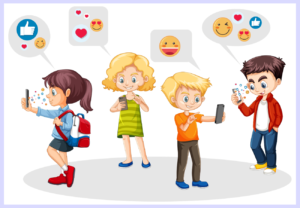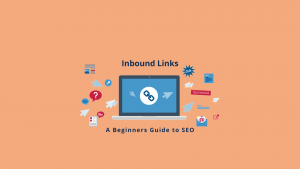Typically, Banking Chatbots generate significantly better results and superior customer experiences for the banking industry and other financial institutions. For instance, they can assist bank customers in getting the status of account balances. As well as transfer funds, apply for personal loans and credit cards, pay bills, check credit scores, and update financial profile data.
Routine customer interactions can be fully or partially automated by introducing a digital assistant or banking chatbot available 24/7. The shift from traditional financial institutions to digital online banking, accelerated by the COVID-19 Pandemic, has driven demand for superior digital experiences. An example of a little Bot is an automated banking system application.
Not to mention, Chatbots in banking were one of the first adoption areas for Chatbot Technology. And it’s one of the more sophisticated sectors in advanced Chatbot implementations. In that case, do you remember old Chatbots – initially incapable of anything but offering pre-scripted spam ads? The “Ask, and you shall receive” concept hasn’t worked until recently.
The progressive advance of technology has seen an increase in various businesses. At the same time, it is moving from traditional to digital platforms to transact with consumers. Numerous companies are also implementing AI techniques on their digital media platforms too. One AI technique that is growing in its application and use is Chatbots. That said, let’s learn more.
Getting To Know The Chatbots Role In Cloud Computing Technology
Chatbots are computer programs that simulate human conversation through voice commands, text chats, or both. A Chatbot, short for Chatterbot, is an Artificial Intelligence (AI) feature that can be embedded and used through any significant messaging application. There are several synonyms for Chatbot. Including “Chat Robot,” “Talkbot,” “Bot,” and “IM Bot.
As well as “Interactive Agent,” “Artificial Conversation Entity,” etc. These tools help add convenience for customers — since they are automated programs. Usually, they interact with customers like a human would, costing little to nothing to engage with. In most cases, Chatbots interact with customers like a human would, costing little to nothing. Learn more from this video:
Sometimes, Chatbots also attend to customers at all times of the day and week. This makes its implementation appealing to many businesses that may not have the manpower. Or even financial resources to keep employees working around the clock. Some examples of chatbot technology are virtual assistants like Amazon’s Alexa and Google Assistant.
We are not forgetting some messaging apps, such as WeChat and Facebook Messenger. AI Chatbots can quickly respond to basic customer queries, freeing up customer service agents to focus on more complex issues. And Bots can answer FAQs, resolve simple cases, and answer repetitive questions. They can even complete specific tasks (like changing an email address).
A Brief History Of Cloud Computing Chatbots Technology Evolution
For your information, the first chatbot was developed in 1964 at MIT. Named ELIZA, it was the brainchild of computer scientist Joseph Weizenbaum. It was an early example of a Natural Language Processing (NLP) computer program designed to simulate human conversation. ELIZA was pretty basic compared to today’s AI-powered Chatbots.
Still, it used a basic pattern-matching algorithm to give the illusion of understanding but couldn’t contextualize events. Similarly, it sets the standards for interacting with customer service chatbots, virtual agents, and virtual assistants today. As well as laying the groundwork for the future of human-machine communication.
In the 2019 report, ‘Competitive Landscape: Virtual Assistant Platforms, Worldwide,’ Gartner outlined three common Chatbot architectures. Eventually, most conversational agents you encounter on the internet are built on.
Understanding How Chatbots Service Solutions Drive Conversations
Technically, to deliver customer support automation services, Chatbots operate in one of two ways — either through machine learning or with set guidelines. Some Chatbots work based on sophisticated Natural Language Processing (NLP) systems.
But, many simpler systems scan for keywords within the input. And then, these systems create a reply using the most matching keywords or the most similar wording pattern from a database. However, a Chatbot that functions with a set of guidelines in place is limited in its conversation since it can only respond to a set number of requests and vocabulary.
Related Topic: WhatsMySerp | Free SERP Ranking Tracker For Websites
The Chatbot is programmed to work independently from a human operator. It can answer questions formulated in natural language and answer as a real person would. In addition, it is only as intelligent as its programming code. Fundamentally, a Chatbot allows interaction between a human and a machine. Whereby the exchange happens via written messages or voice.
Usually, a Chatbot interacts through instant messaging, artificially replicating the patterns of human interactions. In that case, let’s consider the following user-based case scenarios so that you grab a dipper meaning of their workability in our daily lives.
How chatbots work:
- Machine Learning: Allows computers to learn by themselves without programming.
- Natural Language: A computer’s ability to understand human speech or text.
Most AI Chatbot Solutions are conversational apps powered by AI and NLP. They let customers interact with businesses naturally and comfortably without needing a live agent. AI Chatbot solutions can understand user queries. And they interpret intent, provide answers or recommendations, and even complete specific tasks to help simplify support in many ways.
Consider the following uses:
- Automated customer services: Most AI chatbots can quickly respond to basic customer queries, freeing customer service agents to focus on more complex issues. And bots can answer FAQs, resolve simple cases, and answer repetitive questions. They can even complete specific tasks (like changing an email address).
- Improved customer experience: Uniquely, AI Chatbots can provide customers with more personalized, intuitive, and efficient experiences. By understanding natural language queries and giving customized recommendations or automated solutions, customers can get the help they need quickly and easily.
- Increased customer loyalty: Chatbots can help build customer loyalty by providing a positive, efficient service experience. Customers are less likely to become frustrated when they get quick and accurate answers from an automated system than when waiting on hold for an agent.
- Reduced operation costs: AI chatbot solutions can reduce operational costs associated with customer support. By automating basic tasks, businesses can cut down on needing a fully staffed center 24/7.
- Some improved business scalability: AI chatbot solutions can scale support operations as needed. With automated responses, you can handle more inquiries without increasing staffing levels.
Originally, Chatbot communication was only text-based. However, as the technology improves, this interaction paradigm extends to other input methods like touch and voice. Likewise, they are also a form of the primary customer service channel. They allow consumers 24/7 access to the brands they care about in an instant, familiar, and conversational way.
The 21st-century Chatbot has grown beyond simple question-and-answer logic, thanks to AI, into a Swiss army knife of automation and self-service. That can enhance customer support and service and an organization’s operational efficiency.
The Most Common Types Of Cloud Computing Chatbot Technology
Understanding the difference between the fundamental Chatbot Technologies will help you decide which is right for your business. Keeping in mind, the ideal characteristic of Artificial Intelligence is its ability to rationalize. As well as take action.
Actions that have the best chance of achieving a specific goal. A subset of Artificial Intelligence is Machine Learning. It refers to the concept that computer programs can automatically learn from and adapt to new data without being assisted by humans. Still, Deep Learning techniques enable this automatic learning by absorbing vast amounts of unstructured data.
Learn More: The 20 Best Chatbot Examples | Most Intelligent and Innovative
Such as text, images, or video. Today, these Artificial Intelligence Systems that communicate with people through messaging, text, or speech are significantly evolving and becoming necessary in specific industries.
After all, the major players like Google, Apple, Microsoft, Amazon, Slack, etc., are building Bots too. Generally, the common Chatbot Technology types are rule-based programming, computational linguistics, or machine learning (Conversational AI).
Set Guideline Chatbots
A Chatbot with a set of guidelines is limited in its conversation. It can only respond to a set number of requests and vocabulary and is only as intelligent as its programming code. An example of a little bot is an automated banking bot that asks the caller some questions to understand what the caller wants to be done.
The bot would make a command like “Please tell me what I can do for you by saying account balances, account transfer, or bill payment.” If the customer responds with “credit card balance,” the bot would not understand the request and would proceed to either repeat the command or transfer the caller to a human assistant.
Machine Learning Chatbots
Chatbots that function through machine learning have an artificial neural network inspired by the neural nodes of the human brain. The Bot is programmed to learn alone when introducing new dialogues and words. A chatbot receives a unique voice.
Or textual conversations, the number of inquiries it can reply to, and the accuracy of each response it gives increases. Various sectors use such Bots built for other purposes, like retail bots (designed to pick and order groceries). Weather bots that give you forecasts of the day or week. And simply friendly bots that talk to people needing a friend.
The Fintech sector also uses chatbots to make consumers’ inquiries and applications for financial services easier. Think of a small business lender that uses a virtual assistant to provide customers with 24/7 assistance through Facebook Messenger. Or a small business hoping to get a loan from the company. It only needs to answer key qualification questions asked by the Bot.
How Artificial Intelligence And Chatbots Drive Cloud Businesses Value
As Microsoft CEO Satya Nadella says, chatbots are the new apps. In the modern business world, Instant Messaging (IM) Applications like Pinngle are becoming increasingly popular in marketing, ecommerce, customer service, and sales. Messaging apps like Pinngle allow businesses and brands to provide around-the-clock interaction and support, such as instant responses.
Sometimes, they also offer quick answers, complaint resolution, and more. In the real sense, messaging apps and chatbots are gaining more popularity for business purposes. Capacity is also another support automation Chatbot, as it’s defined below.
Chatbots offer various benefits over legacy customer service channels such as phone, email, and live chat. With the help of artificial intelligence, enterprises can utilize the technology to empower customer self-service, boost employee productivity, etc. They also help reduce operational costs. On the one hand, to meet the requirements of larger organizations.
For banks, insurance companies, and telecommunication agencies, Chatbots severely need Artificial Intelligence. On the other hand, to enhance their ability to understand human language and perform more complex tasks and transactions.
Related Topic: What Are Programming Languages? Beginners Best Choice
Concerning Chatbots, the more prominent organization’s branch of artificial intelligence is called Conversational AI. Whereby basic Chatbots help handle a minimal number of tasks.
They use rule-based programming to match user queries with potential answers, typically for basic FAQs. For your information, some Basic Chatbots show their limitations if they receive a request that has not been previously defined. As such, they’ll be unable to assist and spit back a “Sorry, I don’t understand.” response. With that in mind, there are some significant facts.
Include:
- Gartner: 70% of white-collar workers will interact with a chatbot daily by 2022
- Chatbots Life: Chatbots cuts down operational costs by up to 30%
- Juniper Research: Through Conversational AI, by 2023, there will be more than $112 billion in retail revenue
- Drift: There has been a 92% increase in the usage of Chatbots since 2019
NB: Get the ultimate guide to Chatbots for the enterprise. You can download the comprehensive guide to learn about launching an AI chatbot for your business. Whether you’re just curious about automation or getting ready to deploy your 8th chatbot project (go, you!), you’ll find everything you need in ‘The Enterprise Chatbot Guidebook.’
Critical areas where they can drive value to businesses and consumers:
- Respond to customers instantly, eliminating the need for them to wait on hold
- Increase revenue by leading customers to the essential products and services
- Keep costs down by doing the work of multiple employees
- Increase employee efficiency, freeing them up to focus on high-value customer interactions
- Open up new channels for sales, service, and support without tying up additional resources
- Bolster brand loyalty through dynamic and memorable self-service experiences
You can download the guide to learn how AI chatbots can improve your customer experience! Conversational AI uses various technologies such as Automatic Speech Recognition (ASR), Natural Language Processing (NLP), Advanced Dialog management, and Machine Learning (ML) to understand, react and learn from every interaction.
Custom Skills & Technologies Driving Chatbot Innovation
Surprisingly, Chatbots aren’t new in the tech world, though they hit the mainstream only in 2016. In contrast to past Chatbots, the most sophisticated of today’s chatbots can carry on a natural organic conversation. For example, Enterprise Chatbot Solutions offer rich data sources for further analysis. With the help of this data, brands can become more perceptive.
Especially toward their customers’ needs. And by delivering personalized products and services, businesses optimize engagement, gain better relevance, and higher revenue. Consider the introduction of ATMs almost sixty years ago to the first wave of online banking in the early 1980s. Technology-led innovation has made banking more convenient and more automated.
Learn More: 4 Great Examples of How Banking Chatbots Generate Better Results and Enhanced Experience
Technologically, Internet Banking has gradually replaced central street banks. Most recently, mobile banking has been introduced, where interactions occur remotely through touchscreens, keyboards, clicks, and swipes on either the bank’s mobile app or website. In reality, messaging apps outstrip other types of applications.
The primary driver behind 2016’s Chatbot outbreak was decreased user interest in social media and messaging apps. Why? Since users don’t need hundreds of apps on their mobile devices to support each brand.
Messaging applications solve this problem – they are simple, easy, and fast. After that, businesses follow their audience. Currently, more people are using the leading messaging apps than social networks. Be that as it may, you can read and learn more about the leaders of modern AI tools and products in detail.
Some of the best practices in using chatbots
- Use conversational AI for natural language interactions. Adding conversations in the service process lets customers interact with chatbots using natural language rather than specific keywords or phrases. This helps improve accuracy and can make it easier for customers to get the help they need.
- Add machine learning technology. Using machine learning can help ensure that your chatbot is providing accurate responses. And it can make sure it stays consistent as inquiries change over time.
- Personalize customer service experiences. Chatbots let you personalize experiences by gathering data from previous interactions. The bot can then make relevant, personalized recommendations based on the data.
- Integrate with existing systems. Integrating existing systems (CRM, billing, etc.) with your AI chatbot ensures seamless operations across all customer support channels.
The topmost standout AI-driven chatbot solutions
There are some AI-driven chatbot solutions on the market today, and each has its own set of features and advantages to note:
- ChatGPT is an AI-powered chatbot that you can use for many use cases. For instance, customer service, marketing, and sales have found value in the service. It’s powered by OpenAI’s GPT-4 language model, which makes it proficient in several language tasks, like writing, summarization, translation, and conversation. Moreover, it works like a search engine with information on current events.
- Capacity is a chatbot platform that helps you automate customer service and support. It uses AI to understand customer queries and provide answers in a human-like way. It uses both conversational and generative AI to simplify your experience. (It also makes it easy for customers to interact with you.) It’s available in several languages and can connect to many systems, like your CRM, Slack, Teams, email, etc.
- Bing Chat is a chatbot developed by Microsoft designed to provide service and support to users. It’s backed by Microsoft’s AI technology, which lets it understand natural language and respond to user queries in a human-like way. Bing Chat is available in several languages. And often, you can connect it with your existing systems, too.
- Bard is an extensive language model from Google AI, trained on a massive dataset of text and code. It can generate text, translate languages, write content, and answer questions. Bard is still under development. But it’s already learned all sorts of tasks that can be helpful for service and support teams.
Takeaway,
Clearly, in this era of technological advancement, there are numerous messaging apps that subscribers can choose from. Mainly the messaging apps used for chatting. They make communication easy such as instant messaging and voice calls. Perse, most messaging apps are easy to install on smartphones, regardless of the operating system driving the smartphone.
Remember that some mobile devices use Windows, Android, or iOS operating systems. Currently, apps are easy to download on the smartphone and chat immediately.
Related Topic: Online Banking Platform For Startups | Technology Aspects
However, it is essential to acknowledge that different messaging apps have additional features. Some of the standard features of these apps include the ability to make voice and video calls with add-on features for instant messaging and photo sharing.
The best thing is that most of them are also free! You can see the complete list of the most popular messaging apps globally. And that’s all for now! So, do you think Chatbots are helpful business tools? Which ones have you used before? Let us know in our comments section below. But if you need more support, you can Contact Us and let us know how we can help you.









You’ve been an inspiration to me. I love how you’re so kind and selfless. You do such Good Things for people, and it makes me want to be a better person. Thank you!
You are welcome, Sir!
Comments are closed.